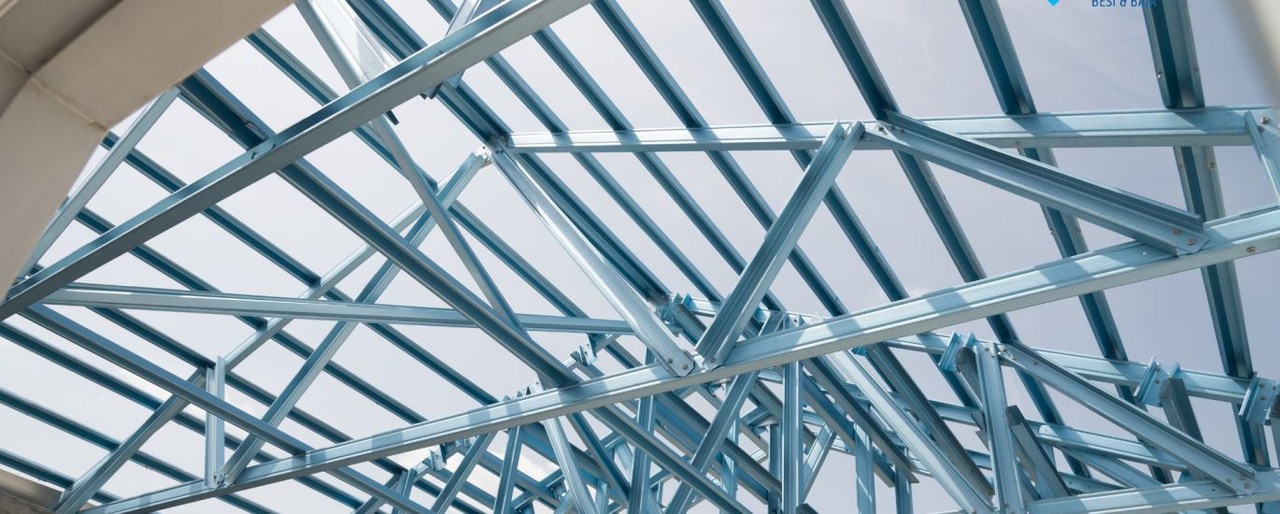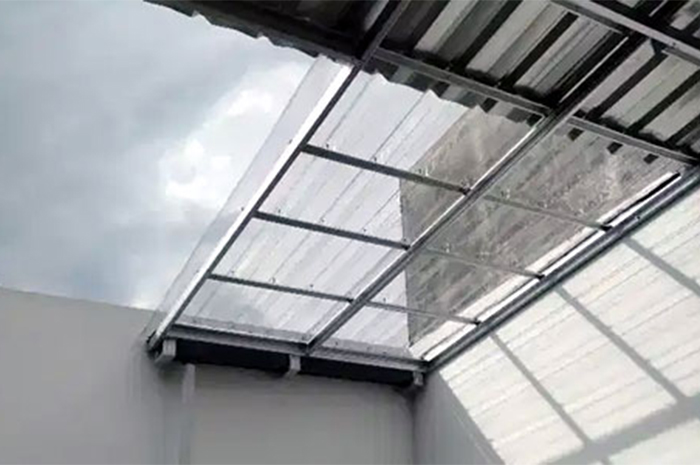
Roofing in the form of metal plates such as spandek or zinc plates is a popular choice in our society. This metal tile has several advantages, namely: lightweight, practical because one sheet is able to cover a fairly large area, and is relatively easier and faster in working on its installation.
The weakness of this type of metal tile is noisy when it rains and also increases the temperature of the room below. Sometimes the temperature is quite felt for the residents, especially during the daytime and coincides with the dry season as well. There are several common methods used to reduce the heat of this metal roof tile house. How to reduce the heat of metal tile, including:
Aluminum FoilThe correct writing is aluminum not aluminum. It is wrong, but knowing now is far better than not knowing at all. This aluminum foil is different from the aluminum foil used for cooking! This aluminum foil is made specifically for metal tile coating and is widely sold in building material stores and building material supermarkets. Aluminum Foil for metal tile is made of 2 layers, namely a layer of heat insulation from aluminum and a reinforcement layer so it is more resistant to tearing. Between the two layers, an air cavity is made to increase the heat insulation power.
Advantages of Aluminum Foil:- Insulator or heat sink is quite good, the temperature conditions of the house or building can be cooler.
- Strong and long enough to use.
- Flexible and easily adapted to the shape of the roof of a house or building.
- Easy to install on a roof frame because it is in the form of rolled sheets.
- Reducing dirt that comes in between the metal tile, so that the ceiling is more durable.
- Withstand leaks when it rains, so that the ceiling can be maintained durability.
- Being able to reduce heat entering the underside of the roof, the ceiling can be maintained, not easily fragile due to excessive expansion.
- Reduces the noise of rainwater that hits metal roofs.
EPS Sheet (Expanded Polystyrene)The other coating is EPS sheet called Styrofoam. Styrofoam is a trademark of building insulation products. But it is mistakenly used to refer to styrofoam foam sheets for packaging or for crafts. The appearance is arguably similar but the way of making it is very different. This EPS insulation sheet has a material strength that is far stronger than that of the styrofoam packaging or craftsmanship sheet.
Advantages of EPS sheets:- Good heat or cold insulation or silencer.
- Resistant to heat and rain if there is seepage due to tampias or cracks in metal tile.
- Its weight is light so it does not provide a large additional burden on the roof truss.
- The sheets are easy to cut so that they are practical in the process of installation.
- EPS sheets are able to withstand the flow of air entering the cracks of the metal tile.
- Being able to reduce heat and also withstand the incoming air flow, the temperature of the room under the roof tends to be more stable so that the air conditioner in the building can work effectively and function more efficiently.
- The service life is quite long, so it is quite efficient in terms of cost because there is no need to replace or repair roof and ceiling.
- Because it is resistant to heat and water, the ceiling can be more durable.
Polyurethane FoamThis is a polyurethane foam that is sprayed on an area that will be insulated from hot or cold. A mixture of certain chemical solutions is sprayed into one area, then the solution expands into a layer of foam that closes the gaps so that insulation can be optimized.
The advantages of polyurethane foam: Bahasa Indonesia
Bahasa Indonesia  Inggris
Inggris
 Bahasa Indonesia
Bahasa Indonesia  Inggris
Inggris
 Roofing in the form of metal plates such as spandek or zinc plates is a popular choice in our society. This metal tile has several advantages, namely: lightweight, practical because one sheet is able to cover a fairly large area, and is relatively easier and faster in working on its installation.
Roofing in the form of metal plates such as spandek or zinc plates is a popular choice in our society. This metal tile has several advantages, namely: lightweight, practical because one sheet is able to cover a fairly large area, and is relatively easier and faster in working on its installation.





